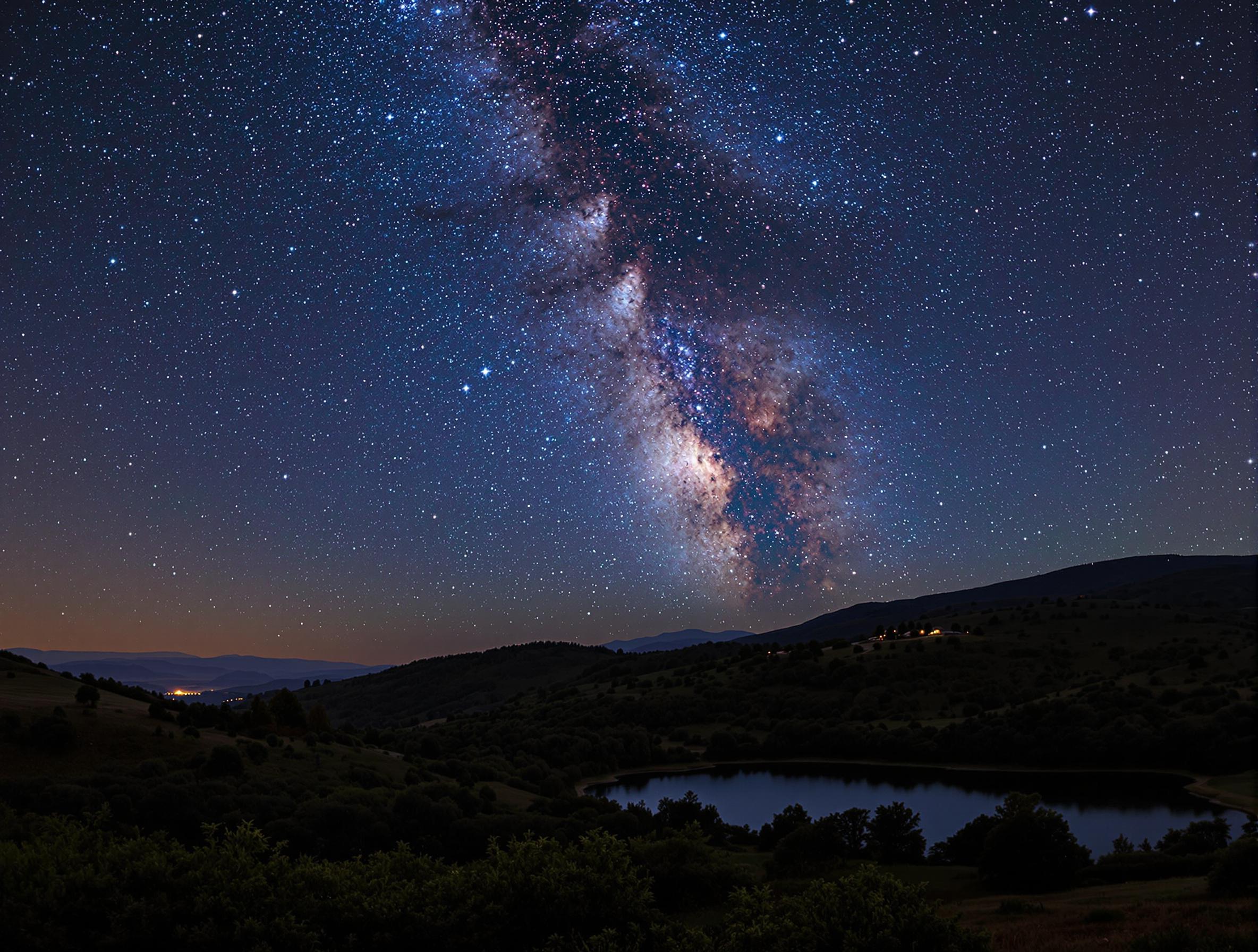🌠 San Lorenzo Night in Italy: Best Stargazing Spots and Safe Overnight Stays
The Brightest Night… in the Dark
Every year, around mid-August, the Italian sky turns into a stage for one of nature’s most magical shows: the Night of San Lorenzo, when the Perseid meteor shower peaks between August 10 and 13, with up to 100 shooting stars per hour.
But to see them clearly, you need three things: darkness, silence, and patience.
And darkness — the real kind — is hard to find nowadays.
🔭 What Is a "Dark Sky"? Understanding the Bortle Scale
To measure how light-polluted a sky is, astronomers use the Bortle Scale. It ranges from:
- Bortle 1: Perfect dark sky — like in deserts or remote mountains.
- Bortle 3: Excellent rural sky — still dark enough for deep stargazing.
- Bortle 5+: Urban/suburban sky — where the Milky Way is barely visible.
A Bortle 1 to 3 location is ideal for watching shooting stars, spotting the Milky Way, and even observing planets and nebulae with the naked eye.
📍 Where to Watch the Stars in Italy – with Comfort and Safety
Here’s a selection of safe stargazing locations in Italy with excellent dark skies, accommodation nearby, and low risk from wildlife. These spots allow you to fully enjoy the magic of the Perseid meteor shower without the stress of late-night driving.
🌌 Top Stargazing Locations in Sardinia
⭐ Genoni (Oristano) — Under the Timeless Sky
Located on a limestone plateau, Genoni boasts Bortle 2 class skies. It’s one of the best dark-sky zones in Sardinia. The local PARC Geomuseum occasionally hosts astronomy nights.
Where to stay: Family-run guesthouses and farm stays. Very quiet, no wildlife hazards.
⭐ Laconi — Between Woods and Stars
Surrounded by forest and clean mountain air, Laconi offers several clearings ideal for stargazing. Just above the village, the sky opens wide.
Bortle 3 skies, safe and calm. The nearby Aymerich Park adds charm to the experience.
Lodging: Rural hotels, cozy B&Bs, and vacation homes.
⭐ Barumini & Gergei — Ancient Stones and Stellar Skies
Near the UNESCO site Su Nuraxi, these highlands are perfect for watching the sky. The area is accessible, well-maintained, and far from city lights.
Sky quality: Bortle 3, with little variation. Local inns and small hotels available.
⭐ Fluminimaggiore — Between Mountains and the Sea
A quiet, underrated gem. The nearby hills offer Bortle 2 skies, with open views and minimal light pollution.
Accommodation: Farm stays, small hotels, and family lodges in a peaceful setting.
🇮🇹 More Stargazing Locations Across Italy
⭐ Val d’Orcia (Tuscany) — Starry Fields and Rolling Hills
A postcard-perfect landscape, offering Bortle 2–3 skies in open rural areas. Some agritourism farms host stargazing nights under the olive trees.
Lodging: Relais, villas, countryside B&Bs.
⭐ Monte Subasio (Umbria) — Silence Above Assisi
Near the sacred city of Assisi, this mountain offers mystical silence and crystal-clear skies (Bortle 2).
Where to stay: Country houses and eco-lodges with panoramic views.
⭐ Pollino National Park (Basilicata/Calabria) — Wild and Astral
Home to some of the darkest skies in Italy (Bortle 1–2). Ideal for serious stargazers. Some remote areas require local guidance.
Best bases: Viggianello, San Severino Lucano, Rotonda – all with safe accommodations.
⭐ Asiago Plateau (Veneto) — Land of Astronomers
High-altitude plateau with the Asiago Observatory, frequent astronomy events, and Bortle 2–3 skies. Cool nights, but incredible clarity.
Facilities: Excellent hotels, mountain lodges, and family accommodations.
⭐ Alta Murgia National Park (Puglia) — Rugged and Radiant
One of the most underrated dark-sky areas. Between Ruvo di Puglia and Gravina, you’ll find vast open fields and Bortle 2 skies.
Stay near towns to ensure access and safety. Avoid unmarked trails at night.
🏕️ A Final Tip: Dark Sky Can Be Anywhere... with the Right Conditions
You don’t always need a famous location to enjoy San Lorenzo night.
Any rural, mountain, or coastal area far from city lights, with clear skies and low humidity, can become the perfect spot — as long as you stay safe.
✔️ Choose a location with nearby accommodation or human presence
✔️ Avoid wildlife-prone or isolated areas without phone signal
✔️ Check weather conditions and emergency access
🧭 What to Bring for a Relaxed Stargazing Experience
No telescope needed. Just bring:
- Folding chair or blanket to lie back comfortably
- Light jacket and mosquito repellent
- Red-light flashlight (won’t ruin night vision)
- Stargazing apps: SkyView, Stellarium, Sky Guide
- Snacks and a warm drink
✨ One Night, a Sky Full of Wishes
In an age of screens and constant noise, the Night of San Lorenzo invites us to look up and slow down.
Whether you’re watching from a Sardinian hilltop or a Tuscan vineyard, the message is the same:
Sometimes all you need is a dark sky, a blanket… and one wish.








Leave a Comment